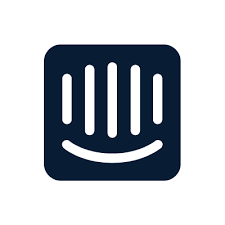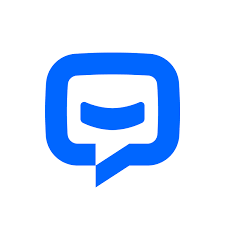Let’s be real — handling customer complaints and support tickets can be a total pain, especially if you’re stuck with old tools or trying to manage it all through email. That’s where help desk software swoops in to save the day. Think of it like having a super-organized sidekick that keeps track of every question, complaint, or request so nothing gets lost.
In this guide, I’m gonna walk you through 20 of the best helpdesk software solutions you can get right now. Doesn’t matter if you’re a small business just starting out or a big company looking to level up your service desk software solutions — there’s something here for you.
You’ll see everything from free options to premium helpdesk systems that can make your support team way faster and more organized. And honestly? Some of these tools surprised me with how much they can actually do.
Table of Contents
Comparison of 20 Best Help Desk Software for 2025
| Sr | Image | Name | Rating | Pricing | Compatibility | Features | Details Page |
|---|---|---|---|---|---|---|---|
| 1 |
 | Zendesk | 4.5 | Paid | Windows, Mac, Android, iOS, Web-based |
| View Details |
| 2 |
| Freshdesk | 4.3 | Freemium | Windows, Mac, Android, iOS, Web-based |
| View Details |
| 3 |
 | Jira Service Management | 4.2 | Freemium | Windows, Mac, Linux, Android, iOS, Web-based |
| View Details |
| 4 |
 | HubSpot | 4.5 | Freemium | Web-based, Mobile |
| View Details |
| 5 |
 | Intercom | 4.3 | Paid | Windows, Mac, Android, iOS, Web-based |
| View Details |
| 6 |
 | Zoho Desk | 4.1 | Freemium | Windows, Mac, Android, iOS, Web-based |
| View Details |
| 7 |
 | Help Scout | 4.4 | Paid | Windows, Mac, Android, iOS, Web-based |
| View Details |
| 8 |
 | Spiceworks | 4.0 | Free | Windows, Android, iOS, Web-based |
| View Details |
| 9 |
 | Freshservice | 4.2 | Paid | Windows, Mac, Linux, Android, iOS, Web-based |
| View Details |
| 10 |
| Aircall | 4.1 | Paid | Windows, Mac, Android, iOS, Web-based |
| View Details |
| 11 |
 | Front | 4.2 | Paid | Windows, Mac, Android, iOS, Web-based |
| View Details |
| 12 |
| Olark | 4.0 | Paid | Windows, Mac, Android, iOS, Web-based |
| View Details |
| 13 |
 | ChatBot | 4.1 | Paid | Windows, Mac, Android, iOS, Web-based |
| View Details |
| 14 |
 | Chatwoot | 4.3 | Freemium | Windows, Mac, Linux, Android, iOS, Web-based |
| View Details |
| 15 |
| ManageEngine ServiceDesk Plus ManageEngine ServiceDesk Plus | 4.0 | Paid | Windows, Mac, Linux, Android, iOS, Web-based |
| View Details |
| 16 |
 | TeamSupport | 4.1 | Paid | Windows, Mac, Android, iOS, Web-based |
| View Details |
| 17 |
| SupportBee | 3.9 | Paid | Windows, Mac, Android, iOS, Web-based |
| View Details |
| 18 |
 | Hiver | 4.2 | Paid | Windows, Mac, Android, iOS, Web-based |
| View Details |
| 19 |
| Faveo Helpdesk | 3.8 | Paid | Windows, Mac, Linux, Android, iOS, Web-based |
| View Details |
| 20 |
 | Tidio | 4.0 | Freemium | Windows, Mac, Android, iOS, Web-based |
| View Details |
1. Zendesk: Zendesk makes it easy to help customers fast using simple help desk software that keeps everything organized.
Zendesk is probably one of the most well-known help desk software options out there. And honestly, there’s a good reason for that. It works for all kinds of businesses, big or small, that want a solid, no-fuss helpdesk system to handle everything from quick questions to tricky tech problems. It basically takes all the mess of customer support and turns it into a simple, organized setup where every ticket gets tracked and nothing slips through the cracks.
What makes Zendesk stand out is how easy it is to use. You don’t need to be a tech pro to figure it out. The layout is clean and simple, so your team can jump in and start helping people right away instead of fighting with confusing help desk solutions. That’s a big deal when you are trying to keep customers happy! The reporting tools are also pretty great. They show you how your support team is really doing, so you can see what’s working and what needs fixing.
Key Features
- Multi-channel support that brings emails, chats, and phone calls into one place
- Automated ticket routing that sends inquiries to the right team members automatically
- Knowledge base builder for creating self-service articles that customers can use
- Advanced reporting and analytics to track your team’s performance and customer satisfaction
- Mobile app support so your agents can help customers even when they’re not at their desk
- Integration with over 1,000 third-party apps and tools your business might already use
Pros & Cons
✅ Pros
- The interface is really user-friendly – even new team members pick it up quickly
- Scalable pricing means you can start small and grow without switching platforms entirely
- Excellent automation features that save your team tons of manual work daily
- Strong security features that keep customer data safe and meet compliance requirements
- Comprehensive reporting gives you real insights into what's working and what isn't
- Great mobile experience means your support never has to stop
❌ Cons
- Can get pretty expensive as you add more agents and advanced features to your plan
- Some of the more advanced customization options require technical know-how to set up properly
Device Compatibility:
Yeah, Zendesk works on pretty much everything – Windows, Mac, Android, iPhone, and through any web browser. They’ve got dedicated mobile apps too, which is nice when you’re on the go.
Pricing:
Zendesk has several pricing tiers, with their basic Support plans starting around $19 per agent per month. There’s no completely free version, but they do offer a free trial so you can test it out. Not too pricey for what you get, honestly.
Customer Support:
Support’s pretty solid – they’ve got live chat, email support, and a comprehensive help center. Plus, there’s phone support available for higher-tier plans, which is nice when you need to talk to a real person.
2. Freshdesk: Freshdesk’s help desk software helps you track customer questions all in one place, so nothing gets lost.
Freshdesk is kinda one of those big names in help desk software that everyone’s heard of, but it’s still not crazy complicated to use. I like that it works really well for small or medium businesses that just want something that… you know… works without being a headache. The whole vibe is to make customer support feel more like you’re actually talking to a person, not some copy-paste bot reply. And yeah, that alone can make a huge difference for customers. You still get all the usual help desk solutions — tickets, tracking, all that — but there are a few neat extras tucked in too.
Now, the thing that makes Freshdesk pop for me? The gamification stuff. Sounds weird, but it turns customer support into something that feels like a bit of a game. You kinda forget you’re “working” because you’re chasing points or hitting targets. It keeps agents from burning out so fast. And they really did think about the user side of things. The service desk software solutions are super easy to figure out, and the teamwork tools? Pretty smooth. You can chat, swap ideas, fix tough problems together — no big fuss. If you’re after desk help software that’s friendly, not fussy, Freshdesk is worth a look.
Key Features:
- Omnichannel support that combines email, phone, chat, and social media in one dashboard
- Smart ticket assignment that automatically routes tickets based on agent skills and workload
- Built-in time tracking and SLA management to keep your response times on target
- Collaboration tools that let agents work together on complex customer issues
- Customer satisfaction surveys that automatically gather feedback after each interaction
- Marketplace with tons of apps and integrations to customize your helpdesk experience
Pros & Cons
✅ Pros
- The free plan is actually pretty generous and works well for small teams starting out
- Gamification features keep agents engaged and motivated throughout their workday
- Intuitive interface means less training time needed for new team members
- Strong automation capabilities help reduce repetitive tasks and save time daily
- Good mobile app functionality for managing tickets while away from the office
- Excellent value for money compared to some of the more expensive alternatives
❌ Cons
- Advanced reporting features are only available in higher-tier plans, which can be limiting
- Some users find the customization options a bit limited compared to other platforms
Device Compatibility:
Works great on Windows, Mac, and has solid mobile apps for both Android and iOS. Browser-based access works smoothly on all major platforms too.
Pricing:
There’s a free plan that supports up to 10 agents, which is pretty sweet for small teams. Paid plans start around $15 per agent per month, making it one of the more affordable help desk solutions out there.
Customer Support:
They offer email support, live chat, and phone support depending on your plan. The help center is well-organized and has lots of useful articles. Response times are generally decent from what I’ve seen.
3. Jira Service Management: Jira Service Management is help desk software that helps teams fix issues quickly and work better together.
Jira Service Management is Atlassian’s version of help desk software. It is a big hit with IT teams and tech-savvy companies. It is built on the same setup as the regular Jira project management tool. So if your team already uses that, you will feel right at home. This helpdesk software isn’t just for customer support it also works great for handling internal IT requests and other service desk needs.
What makes Jira Service Management stand out is how easily it connects with development work and other Atlassian tools. You will see what I mean once you try it. It is especially good for handling tech support requests where you need to keep track of bugs, new feature requests or system problems. This helpdesk system is definitely a bit more technical than some other help desk solutions out there but for a lot of teams, that is exactly what they are looking for.
Key Features:
- ITIL-aligned service management processes that help maintain professional IT standards
- Powerful automation engine that can handle complex workflows and business rules
- Asset and configuration management to keep track of your IT infrastructure
- Change management features that help you implement updates safely and systematically
- Integration with development tools like Bitbucket, Confluence, and other Atlassian products
- Advanced reporting and dashboards that provide insights into service performance
Pros & Cons
✅ Pros
- Excellent integration with other Atlassian tools if you're already using that ecosystem
- Strong automation capabilities can handle very complex business processes and workflows
- Great for IT service management and handling technical support requests efficiently
- Flexible workflow customization allows you to match your exact business processes
- Robust reporting features provide detailed insights into team performance and trends
- Good for teams that need to track both external customer issues and internal IT requests
❌ Cons
- Can be overwhelming for non-technical users who just want simple ticket management
- Steeper learning curve compared to more user-friendly alternatives like Freshdesk or Help Scout
Device Compatibility:
Cloud-based solution that works on any device with a web browser. Mobile apps available for Android and iOS, though the experience is better on desktop.
Pricing:
Plans start around $21 per agent per month for small teams. There’s a free tier for up to 3 agents, which is great for tiny teams or testing purposes.
Customer Support:
Atlassian provides community forums, documentation, and paid support depending on your plan level. The community is pretty active and helpful for troubleshooting issues.
4. HubSpot: HubSpot’s help desk software lets you chat with customers and keep all messages neat and tidy in one spot.
HubSpot’s Service Hub is part of its bigger CRM platform, so it’s a solid pick if you want help desk software that works smoothly with your sales and marketing tools. If you are already using other HubSpot products, it’s even better, because everything just clicks together. It is not just about answering support tickets it is more about giving your customers a complete, connected experience.
What really makes this help desk software stand out is how it pulls in customer info from every angle — sales, marketing and support — all in one place. Most help desk solutions keep to themselves, but this one doesn’t. When I first tried it, I was kind of surprised by how well it all connected. And the reporting? Pretty awesome. You don’t just get support numbers — you also see how your help desk support actually affects your bigger business goals.
Key Features:
- Integrated CRM that shows complete customer history across sales, marketing, and support
- Conversation routing that intelligently directs inquiries to the right team members
- Knowledge base tools that help create and maintain self-service content for customers
- Customer feedback surveys and NPS tracking to measure satisfaction over time
- Live chat and chatbot capabilities that can handle simple inquiries automatically
- Ticketing system that integrates seamlessly with other HubSpot tools and workflows
Pros & Cons
✅ Pros
- The free tier is surprisingly robust and includes many features small businesses actually need
- Seamless integration with HubSpot's CRM gives you complete customer context for every interaction
- User-friendly interface that doesn't require extensive training for new team members
- Strong reporting and analytics help you understand how support impacts overall business metrics
- Good automation features help streamline repetitive tasks and improve response times
- Excellent for businesses that want to unify their customer-facing operations
❌ Cons
- Advanced features require upgrading to higher-tier HubSpot plans, which can get expensive quickly
- Some customization options are limited compared to specialized help desk platforms
Device Compatibility:
Cloud-based platform that works on all major browsers. Mobile apps available for iOS and Android with good functionality for managing tickets on the go.
Pricing:
There’s a generous free plan that works well for small teams. Paid Service Hub plans start around $45 per month for additional features and users. Not the cheapest option, but good value considering the CRM integration.
Customer Support:
HubSpot offers extensive documentation, community forums, and phone/email support. They’re known for having helpful customer success managers, especially for paid plans.
5. Intercom: Intercom uses smart help desk software to chat with customers in real time and solve their problems fast.
Intercom does help desk software a bit differently. Instead of just giving you a place to manage tickets, it’s built around chatting with customers like you would in a normal conversation. It’s all about making support feel friendly and natural, not stiff or formal. A lot of SaaS companies and online businesses love it because it helps them give a more personal, engaging support experience.
What makes Intercom stand out in the world of helpdesk software solutions is how it puts messaging first and adds smart automation. You’ll see what I mean when you use it — the platform can pop up and talk to website visitors, figure out if they’re a good lead, and send them to the right team member. And honestly, their chatbot is pretty impressive. It can handle a bunch of common questions on its own without needing a real person to jump in.
Key Features:
- Messenger platform that enables real-time conversations with customers across web and mobile
- Automated workflows that can qualify leads, route conversations, and handle common questions
- Customer data platform that tracks user behavior and conversation history
- Proactive messaging capabilities that let you reach out to customers based on their actions
- Resolution bot that can answer frequently asked questions automatically
- Team inbox that organizes all customer conversations in one collaborative space
Pros & Cons
✅ Pros
- Excellent user experience that makes conversations feel natural and engaging for customers
- Strong automation and bot capabilities can handle many inquiries without human intervention
- Good integration options with popular business tools and customer data platforms
- Modern, intuitive interface that most team members can learn quickly
- Proactive messaging features help you engage customers before they have problems
- Great for businesses that want to blend support with sales and marketing conversations
❌ Cons
- Can get quite expensive as you scale up, especially with advanced features and higher message volumes
- Less traditional ticketing functionality compared to more formal help desk systems
Device Compatibility:
Web-based platform with mobile apps for iOS and Android. Works well across all major browsers and devices.
Pricing:
Intercom’s pricing can be on the higher side, with plans typically starting around $39 per seat per month. There’s no free plan, but they do offer a 14-day free trial to test things out.
Customer Support:
They provide email support, live chat (naturally), and a comprehensive help center. Response times are generally good, and they practice what they preach with their conversational support approach.
6. Zoho Desk: Zoho Desk is help desk software that helps you manage customer questions and reply quickly with ease.
Zoho Desk is part of the bigger Zoho business tools. If you are already using Zoho apps, this help desk software just fits right in. It’s made for teams that want a complete but affordable way to handle customer support. Perfect for small and medium businesses that need more than just email support, but do not want something super confusing or hard to use.
What makes Zoho Desk stand out from other help desk solutions is how it balances features with simplicity. You still get smart stuff like automation and even AI-powered tools, but without the crazy price tag. That’s huge if you are trying to keep up with bigger companies while running on a smaller budget. The multichannel support works really well too, and if you’re already on other Zoho products, everything connects smoothly for an all-in-one business setup.
Key Features:
- Multi-channel ticket management that handles email, phone, chat, and social media inquiries
- AI-powered assistant named Zia that can suggest responses and automate routine tasks
- Time tracking and SLA management to ensure your team meets response time commitments
- Customer happiness rating system that automatically collects feedback after ticket resolution
- Department-based routing that ensures tickets reach the most qualified team members
- Mobile app with offline capability so agents can work even without internet connection
Pros & Cons
✅ Pros
- Very affordable pricing makes it accessible for small businesses and startups
- Good integration with other Zoho products creates a unified business management experience
- AI features are surprisingly advanced for the price point you're paying
- Clean, intuitive interface doesn't require extensive training for new users
- Solid automation capabilities help reduce manual work and improve efficiency
- Offline mobile functionality means support doesn't stop when connectivity is poor
❌ Cons
- Some advanced customization options are limited compared to more expensive platforms
- The AI features, while useful, aren't as sophisticated as what you'd find in premium solutions
Device Compatibility:
Cloud-based platform that works on Windows, Mac, and has good mobile apps for Android and iOS. The mobile apps even work offline, which is pretty neat.
Pricing:
There’s a free plan for up to 3 agents that includes basic features. Paid plans start around $14 per agent per month, making it one of the more budget-friendly helpdesk system options available.
Customer Support:
Zoho provides email support, live chat, and phone support depending on your plan. Their help documentation is comprehensive, and the community forums are fairly active.
7. Help Scout: Help Scout’s help desk software is simple and friendly, making customer support feel more personal.
Help Scout is a bit different from most help desk software. It feels more like using email than some big, formal ticket system. That’s why a lot of small and medium businesses like it — it keeps things friendly and personal. If your team cares more about helping customers than just pushing through a huge pile of tickets, this could be your thing. It’s built to make support feel real, not cold and corporate.
What really makes Help Scout stand out from other helpdesk software solutions is the way it uses a shared inbox. Everyone on your team can see the conversations, jump in, and work together. You are not stuck with stiff ticket numbers and forms — it’s just simple back-and-forth chats with customers. And honestly, that setup works great if you want your help desk support to feel human, not like some call center.
Key Features:
- Shared inbox system that makes customer conversations visible and collaborative for the whole team
- Customer timeline that shows complete interaction history across all communication channels
- Knowledge base builder with advanced search and organization capabilities
- Satisfaction ratings and reporting that help you track how customers feel about your support
- Collision detection that prevents multiple agents from responding to the same customer simultaneously
- Workflow automation that can assign, tag, and route conversations based on your business rules
Pros & Cons
✅ Pros
- Email-like interface feels natural and doesn't require much training for most team members
- Strong focus on keeping customer interactions personal and relationship-focused rather than transactional
- Good collaboration features make it easy for team members to work together on customer issues
- Clean, uncluttered interface helps agents focus on customers rather than navigating complex software
- Reasonable pricing for the features and user experience you get with the platform
- Excellent customer support from Help Scout themselves – they practice what they preach
❌ Cons
- Limited advanced automation compared to more enterprise-focused platforms like Zendesk
- May not scale as well for very high-volume support operations that need more sophisticated routing
Device Compatibility:
Web-based platform that works great on all browsers. Mobile apps available for iOS and Android, though the experience is optimized more for desktop use.
Pricing:
Plans start around $20 per user per month, with a free trial available. No free plan, but the pricing is reasonable for what you get in terms of features and user experience.
Customer Support:
Help Scout has excellent customer support – email, live chat, and lots of helpful resources. They’re known for practicing what they preach when it comes to personal, helpful customer service.
8. Spiceworks: Spiceworks offers free help desk software that helps small teams track and fix tech issues easily.
Spiceworks takes a different route when it comes to help desk software. It’s totally free, which is why a lot of IT teams and small businesses like it. It actually started as a tool for managing IT stuff, then later added customer support features. So it’s built on a solid tech base. It’s great if you need to handle both IT issues inside your company and customer questions from outside — all in the same place.
What makes Spiceworks stand out from other help desk solutions is that it’s 100% free and backed by its user community. Instead of charging you a monthly fee, they make money from ads and a professional network. That means you get solid service desk software solutions without paying a single rupee. Honestly, I was kind of shocked when I first found out — the features are pretty strong for something that doesn’t cost a thing.
Key Features:
- Completely free ticketing system with no user limits or hidden fees
- Network monitoring and IT asset management built into the same platform
- Community-driven knowledge base where IT professionals share solutions and advice
- Mobile app that lets technicians manage tickets and network alerts on the go
- Integration capabilities with popular business tools and other IT management systems
- Reporting features that help track ticket resolution times and team performance
Pros & Cons
✅ Pros
- Completely free with no user limits makes it perfect for budget-conscious organizations
- Strong IT focus means it understands the unique needs of technical support teams
- Active community provides lots of shared knowledge and troubleshooting help
- No ongoing subscription costs means predictable budgeting for your support operations
- Good for managing both internal IT requests and external customer support tickets
- Includes bonus IT management features like network monitoring and asset tracking
❌ Cons
- Interface feels a bit dated compared to more modern helpdesk platforms
- Limited customization options since it's designed to serve a broad user base for free
Device Compatibility:
Windows-based application with web access available. Mobile apps for iOS and Android provide basic functionality for managing tickets remotely.
Pricing:
Completely free! That’s pretty much the whole point of Spiceworks. No hidden costs, no user limits, no premium upsells to worry about.
Customer Support:
Since it’s free, support comes primarily through community forums, which are actually quite active and helpful. No direct customer support, but the community often provides faster answers anyway.
9. Freshservice: Freshservice is help desk software that helps IT teams fix problems fast and keep systems running smooth.
Freshservice is the IT-focused version of help desk software from the same people who made Freshdesk. Instead of being for all kinds of customer service, it is made for IT teams. They can use it to handle internal service requests, fix problems and manage changes along with the usual help desk support. It follows ITIL best practices, so it is great for bigger companies with a formal IT helpdesk system.
You will notice this when you try its asset management, change management and problem management tools. They are more advanced than what you find in most helpdesk software solutions. For any IT team dealing with a lot of complex work, these features can save time and make things run much smoother.
Key Features:
- ITIL-compliant service desk with incident, problem, and change management workflows
- Asset management system that tracks hardware, software, and configuration items automatically
- Automated workflows that can handle routine IT requests without human intervention
- Service catalog where employees can request IT services through self-service portals
- Integration with popular IT tools like Active Directory, monitoring systems, and deployment tools
- Advanced reporting and analytics focused on IT service metrics and performance indicators
Pros & Cons
✅ Pros
- Excellent IT service management capabilities that go way beyond basic ticket handling
- Strong automation features can handle many routine IT requests without manual intervention
- ITIL compliance makes it suitable for larger organizations with formal service management requirements
- Good asset management features help track and manage IT infrastructure comprehensively
- Integration with IT tools and systems makes it fit well into existing technology environments
- Scalable pricing allows organizations to grow their IT service management capabilities over time
❌ Cons
- Might be overkill for organizations that just need basic customer support functionality
- Higher learning curve due to the more complex IT service management features and workflows
Device Compatibility:
Cloud-based platform accessible through web browsers on Windows, Mac, and Linux. Mobile apps available for iOS and Android with good functionality for IT technicians.
Pricing:
Plans start around $19 per agent per month for basic IT service desk functionality. More advanced features like asset management and change management are available in higher-tier plans.
Customer Support:
Freshworks provides email, phone, and chat support depending on your plan level. They also have extensive documentation and training resources for IT service management best practices.
10. Aircall: Aircall’s help desk software adds phone support so you can talk to customers and help them right away.
Aircall is mainly a cloud-based phone system, but it’s also got some pretty help desk software features. It’s great for support teams that spend a lot of time helping customers over the phone. This helpdesk software blends voice calls with other ways of talking to customers, like email or chat and connects with CRM tools too. Sales and support teams really like it because they get solid call-handling features mixed with ticket management in one place.
What makes Aircall stand out from other help desk solutions is its “phone-first” style. Most service desk software solutions today focus more on chat and email, but Aircall puts phone calls front and center. And that’s kind of refreshing. You will see what I mean when you try its call routing, recording and analytics tools — they are way better than the basic phone support add-ons you find in most helpdesk software.
Key Features:
- Cloud-based phone system with advanced call routing and queue management
- Call recording and monitoring features for training and quality assurance purposes
- Integration with popular CRM and helpdesk platforms to sync customer data
- Real-time analytics and reporting on call volume, wait times, and agent performance
- Mobile app that lets agents handle business calls from their personal devices
- International phone numbers and global calling capabilities for worldwide support
Pros & Cons
✅ Pros
- Excellent phone system capabilities that go far beyond basic calling functionality
- Good integration with popular CRM and support platforms to maintain unified customer records
- Professional call handling features like queues, routing, and recording work reliably
- User-friendly interface makes it easy for agents to handle calls efficiently
- Mobile functionality means agents can provide phone support from anywhere
- Good for teams that need to maintain high-quality phone-based customer service
❌ Cons
- More expensive than basic helpdesk solutions since you're paying for advanced phone system features
- Limited traditional ticketing and case management compared to dedicated helpdesk platforms
Device Compatibility:
Cloud-based service accessible through web browsers and desktop apps for Windows and Mac. Mobile apps for iOS and Android provide full calling functionality.
Pricing:
Plans typically start around $30 per user per month since you’re getting professional phone system features along with basic helpdesk capabilities. Pricing varies based on calling volume and features needed.
Customer Support:
Aircall provides email and phone support, which makes sense given their focus on voice communication. They also offer live chat and have a comprehensive help center.
11. Front: Front’s help desk software brings emails, chats, and texts into one place for easy customer help.
Front takes a pretty different approach to help desk software. Instead of keeping things in separate tools, it pulls email, chat, SMS, and even social media messages into one shared team inbox. So your whole team can see and work on customer conversations in one place. This is super handy for teams that have to manage a bunch of channels but still want to keep things personal. It’s built on the idea that customer support works best when it’s a team effort and everyone’s in the loop.
What really makes Front stand out from other helpdesk software solutions is how it’s all about teamwork and transparency. Most desk help software hides messages in each agent’s own inbox. Front flips that. Everything’s open, visible, and easy to share with your team. Honestly, that surprised me the first time I tried it. It changes the way teams handle issues. It feels less like a stiff helpdesk system and more like a social tool where everyone jumps in to help.
Key Features:
- Shared team inbox that makes all customer conversations visible to the appropriate team members
- Multi-channel communication that handles email, chat, SMS, and social media in one interface
- Collision detection prevents multiple team members from responding to the same customer simultaneously
- Internal comments and @mentions for collaborating on customer issues without customers seeing
- Rule-based automation for routing, tagging, and organizing conversations automatically
- Integration with popular business tools and CRM systems to maintain customer context
Pros & Cons
✅ Pros
- Excellent team collaboration features make it easy for multiple people to work on customer issues
- Clean, modern interface that feels more like familiar email tools than complex helpdesk software
- Good automation capabilities help organize and route conversations without manual effort
- Strong integration options connect with tools your team is probably already using
- Transparent approach to customer conversations helps maintain consistency across team responses
- Works well for teams that handle customer communications across multiple channels
❌ Cons
- Can get expensive as you add more team members and advanced features
- Less suitable for high-volume transactional support that needs formal ticket tracking
Device Compatibility:
Web-based platform that works on all major browsers. Mobile apps available for iOS and Android with good functionality for managing conversations on the go.
Pricing:
Plans start around $19 per user per month for basic team inbox functionality. Higher tiers include more advanced automation and integration features.
Customer Support:
Front offers email and chat support along with a comprehensive help center. They also provide onboarding assistance to help teams get set up effectively.
12. Olark: Olark’s help desk software lets you chat live with customers, answering questions quickly and simply.
Olark is a help desk software that’s all about live chat and keeping things personal. It is perfect if you want real conversations on your website instead of those cold, robotic chats. This isn’t one of those massive, complicated help desk solutions with a ton of stuff you will never use. It’s built for one main thing — making live chat easy and friendly. The whole idea is that live chat should actually help you connect with people, not just give quick one-word answers.
What really makes Olark stand out from other helpdesk software solutions is how simple it is. It is not trying to be the do-everything kind of service desk software solutions. It just nails live chat. And honestly, it does it really well. When you set it up, you will see what I mean — the install takes no time, and the agent screen is super clean and easy to use. No extra junk, no distractions. This kind of focus works great for businesses that mainly need chat support and don’t want to mess with a bunch of features they’ll never touch.
Key Features:
- Easy-to-install live chat widget that integrates seamlessly with most websites
- Visitor monitoring that shows who’s on your site and what pages they’re viewing
- Automated chat triggers that can proactively engage visitors based on their behavior
- Chat transcripts and conversation history for maintaining context across interactions
- Team management features for handling chat queues and agent availability
- Integration options with popular CRM and email marketing platforms
Pros & Cons
✅ Pros
- Very easy to set up and start using without extensive technical configuration
- Clean, focused interface helps agents concentrate on conversations rather than navigating complex software
- Good visitor monitoring gives context about who you're talking to before conversations start
- Reasonable pricing makes it accessible for small businesses that need professional chat support
- Reliable chat functionality that rarely experiences downtime or technical issues
- Good for businesses that want to add chat without overhauling their entire support process
❌ Cons
- Limited ticketing and case management features compared to comprehensive helpdesk platforms
- Fewer advanced automation and routing features than more expensive chat solutions
Device Compatibility:
Web-based chat system that works on any device with a browser. Mobile apps available for agents to handle chats from smartphones and tablets.
Pricing:
Plans start around $29 per agent per month, which is reasonable for professional live chat capabilities. There’s a free trial available to test the service.
Customer Support:
Olark provides email support and has a helpful knowledge base. Since they specialize in chat, you can also get support through their own live chat system.
13. ChatBot: ChatBot uses smart help desk software to answer common questions automatically, saving time for everyone.
ChatBot is a bit different from your usual help desk software. Instead of the old-school ticket system, it’s all about AI-powered chats that handle customer service on their own. It is made for businesses that want to answer common customer questions automatically, but still give people the choice to talk to a real person if needed. This kind of helpdesk software works great for e-commerce stores, SaaS companies, and pretty much any business that gets the same customer questions over and over.
What makes ChatBot stand out from other service desk software solutions is the way it focuses on automation, not just managing human agents. It is got this visual bot builder that lets you create chat flows without touching a single line of code. Honestly, I was kind of surprised at how powerful it is. Once you check out the templates and automation tools, you will see it can do way more than a simple FAQ bot. It can actually handle pretty complex conversations without breaking a sweat.
Key Features:
- Visual bot builder that lets you create conversation flows without programming knowledge
- AI-powered natural language processing that understands customer intent and context
- Live chat handoff that seamlessly transfers conversations from bots to human agents
- Multi-channel deployment across websites, Facebook Messenger, and other platforms
- Analytics and reporting that show bot performance and common customer inquiry patterns
- Integration with popular business tools and CRM systems for maintaining customer context
Pros & Cons
✅ Pros
- Can handle many common customer inquiries automatically, reducing workload on human agents
- Visual bot builder makes it accessible for non-technical team members to create and modify bots
- Good analytics help you understand what customers are asking about most frequently
- Seamless handoff to human agents when automation isn't sufficient for complex issues
- Works across multiple channels so customers can interact however they prefer
- Can significantly reduce response times for common questions and simple transactions
❌ Cons
- Still requires human oversight and regular updates to maintain effectiveness over time
- Initial setup and conversation flow design can be time-consuming to get right
Device Compatibility:
Cloud-based platform that can be deployed on websites and various messaging platforms. Works across all devices and browsers.
Pricing:
Plans typically start around $50 per month for basic bot functionality, with pricing based on the number of interactions rather than human agents.
Customer Support:
ChatBot provides email support and comprehensive documentation. They also offer setup assistance and consultation for designing effective bot conversations.
14. Chatwoot: Chatwoot is open-source help desk software that helps teams chat with customers across many channels easily.
Chatwoot is an open-source help desk software that makes it super easy to talk to customers on different channels. It is a good pick for tech savvy teams and developers who want the freedom of open source but also need solid help desk support features. Think of it as a budget friendly option compared to pricey platforms, but still packed with all the desk help software tools you had expect.
What really makes Chatwoot stand out from other help desk solutions is that it is open-source and very friendly for developers. You can run it on your own server or use their cloud version. And the best part? The code is 100% open, so you can tweak it however you want. You don’t see that kind of control in many helpdesk software solutions.
It also comes with modern tools like real time teamwork, automation and multi-channel chat without the “premium” price tag. So if you want a helpdesk system that’s flexible, clear and won’t break the bank, Chatwoot is worth a look.
Key Features:
- Multi-channel conversations that bring together website chat, email, Facebook, WhatsApp, and more
- Real-time collaboration features so your team can work together on customer issues efficiently
- Automated workflows that can route inquiries and send responses based on your business rules
- Open-source flexibility means you can customize it exactly how your help desk support needs work
- Mobile apps for iOS and Android so you can manage customer conversations even while traveling
- Integration capabilities with popular business tools and CRM systems you might already use
Pros & Cons
✅ Pros
- The open-source nature means it's either free or very affordable compared to other options
- Clean, modern interface that doesn't require extensive training for your team members
- Multi-channel support works really well for travel businesses getting inquiries from everywhere
- Good automation features help handle common questions without manual intervention from staff
- The best part is you can self-host for complete control over your data and customization
- Honestly, I liked how responsive and helpful the community support is for troubleshooting
❌ Cons
- Setting up self-hosted versions requires some technical knowledge that not everyone has
- Hmm… the reporting features aren't as advanced as what you'd find in premium solutions
Device Compatibility:
Yeah, it runs well on all the big platforms since it’s web-based. Mobile apps work great on Android and iPhone, plus you can access it from any computer browser.
Pricing:
There’s a completely free self-hosted option, which is great! Their cloud service starts around $10-15 per agent per month. Not too pricey, honestly, especially for what you get.
Customer Support:
Support’s decent through their community forums and GitHub. The cloud version gets email support too, which is nice when you need help quickly.
15. ManageEngine ServiceDesk Plus: ManageEngine ServiceDesk Plus helps IT teams with easy help desk software to track and fix tech issues fast.
ManageEngine ServiceDesk Plus is a powerful help desk software. It is great for big travel companies or agencies that need strong IT service tools. This is not just about handling tickets. It also has asset management, change management and other useful features that large teams like. It’s built for businesses that want enterprise level desk help software, but without the hard setup some tools need.
What makes ServiceDesk Plus different from other service desk software solutions is its ITIL compliance and deep IT focus. I was honestly surprised by how much it can do. It works for simple customer questions, but it can also manage complex IT systems. The automated workflows and reports are worth checking out. This helpdesk system is made for companies that want to manage customer support and internal IT requests on the same platform.
Key Features:
- ITIL-compliant service desk that follows industry best practices for IT service management
- Asset and configuration management to keep track of all your IT equipment and software
- Advanced automation engine that can handle complex workflows and business process rules
- Multi-channel support for handling customer inquiries from email, web, and phone efficiently
- Comprehensive reporting and analytics that give insights into help desk support performance
- Integration with popular business tools and third-party applications your organization might use
Pros & Cons
✅ Pros
- Excellent for larger organizations that need both customer support and IT service management
- The automation capabilities are really powerful and can handle complex business processes well
- Strong reporting features provide detailed insights into team performance and service metrics
- Good integration options with other ManageEngine products and third-party business tools
- Honestly, I liked how the asset management features help keep track of everything centrally
- ITIL compliance makes it suitable for organizations with formal service management requirements
❌ Cons
- Can be overwhelming for small businesses that just need basic customer support functionality
- Higher learning curve due to the extensive features and IT service management complexity
Device Compatibility:
Cloud-based platform that works on Windows, Mac, and Linux through web browsers. Mobile apps available for managing tickets on smartphones and tablets.
Pricing:
Plans are based on the number of technicians and IT assets you want to manage, with pricing typically starting around $25-30 per technician per month. There’s usually a free trial available to test it out.
Customer Support:
ManageEngine provides email, phone, and live chat support depending on your plan level. They also have extensive documentation and training resources available.
16. TeamSupport: TeamSupport’s help desk software helps customer service teams work together and solve problems faster.
TeamSupport is help desk software made for B2B companies. That’s why it is a great choice for travel agencies and corporate travel management companies. This is not the kind of helpdesk software that only focuses on closing tickets fast. It is all about teamwork and keeping good relationships with clients. It works really well for travel businesses that handle corporate accounts or complex travel plans with many people involved. In those cases, clear communication matters a lot.
What makes TeamSupport different from other help desk solutions is how it is built around the customer, not just the ticket. Instead of showing each ticket on its own, it groups everything by customer. That way, you can see the whole relationship history in one place. This is super helpful when you’re looking after big corporate travel accounts. You can quickly pull up past chats, emails and requests to understand the bigger picture of each client. Once you see how it displays all that info, you will get why it is such a smart helpdesk system for keeping clients happy.
Key Features:
- Customer-centric ticket organization that groups all interactions by customer account rather than individual tickets
- Collaboration tools that let multiple team members work together on complex customer issues
- Advanced reporting and analytics focused on customer relationships and help desk support metrics
- Integration capabilities with CRM systems and other business tools commonly used in travel
- Knowledge management system that helps build and maintain internal expertise and customer resources
- Mobile access so your team can manage customer relationships even while traveling for business
Pros & Cons
✅ Pros
- The customer-centric approach works really well for B2B relationships and corporate travel accounts
- Strong collaboration features make it easy for teams to work together on complex issues
- Good reporting capabilities help you understand customer satisfaction and team performance trends
- The best part is how it maintains context across multiple interactions with the same customer
- Honestly, I liked how the interface makes it easy to see the complete customer relationship history
- Works well for businesses that need to manage ongoing relationships rather than one-off transactions
❌ Cons
- More expensive than basic helpdesk solutions since it's focused on B2B relationship management
- Might be overkill for businesses that primarily handle simple, transactional customer inquiries
Device Compatibility:
Web-based platform accessible from any device with a browser. Mobile apps available for iOS and Android with good functionality for managing customer relationships.
Pricing:
Pricing typically starts around $35-50 per user per month, reflecting its focus on B2B relationship management. There’s usually a free trial to test the features.
Customer Support:
TeamSupport offers phone, email, and live chat support. They also provide training resources and customer success management for larger accounts.
17. SupportBee: SupportBee is simple help desk software that helps small teams answer customer emails without hassle.
SupportBee is a simple, email-focused help desk software that’s great for small travel businesses and agencies who just want something easy. It works like a shared email inbox, so it feels natural for most small teams. You do not have to deal with a bunch of complex features or tricky setups it is made for companies that do not need heavy automation or big enterprise tools. The main goal here is to make sure no customer emails get missed.
What makes SupportBee stand out from other helpdesk software solutions is how it keeps things simple and sticks to email based support. This helpdesk system is all about making your email management more organized and letting your team work together better. Honestly, if your business mostly talks to customers through email, this approach works really well. You will see what I mean when you try the assignment and collaboration tools — they turn messy email threads into a smooth, team-friendly workflow.
Key Features:
- Shared email inbox that lets your whole team see and collaborate on customer inquiries
- Simple ticket assignment and tagging system that helps organize and prioritize customer issues
- Basic automation rules that can route emails and assign tickets based on your preferences
- Customer satisfaction surveys that automatically follow up after issues are resolved
- Time tracking capabilities to monitor how long your help desk support tasks actually take
- Integration options with popular business tools like Slack, Zapier, and various CRM systems
Pros & Cons
✅ Pros
- Very easy to set up and start using – most teams can get going within minutes
- The email-focused approach feels natural for businesses that primarily support customers via email
- Clean, simple interface doesn't overwhelm team members with unnecessary features or complexity
- Good value for money, especially for small teams that need basic collaborative email management
- The best part is how it maintains simplicity while still providing essential helpdesk functionality
- Honestly, I liked how the customer satisfaction tracking helps you monitor service quality
❌ Cons
- Limited advanced features compared to more comprehensive helpdesk platforms available
- Hmm… might not scale well for larger teams or businesses with complex support workflows
Device Compatibility:
Web-based platform that works on all browsers and devices. No dedicated mobile apps, but the responsive web interface works well on smartphones.
Pricing:
Plans typically start around $15-20 per user per month, making it one of the more affordable helpdesk system options. There’s usually a free trial available.
Customer Support:
SupportBee provides email support and has a helpful knowledge base. Response times are generally good for a service in this price range.
18. Hiver: Hiver turns your Gmail into help desk software so teams can manage customer questions right inside email.
Hiver changes your Gmail into easy to use help desk software. It’s a great pick for travel businesses that already use Google Workspace. You don’t need to switch to a new system or learn something complicated. You just work inside Gmail like you always do. That is why it’s perfect for small and medium travel agencies that want pro support tools without the hassle.
What is special about Hiver compared to other help desk solutions is how well it fits with Gmail and Google tools. The helpdesk system works right in your inbox, so there’s almost no learning curve. And that’s a big deal when you want better customer support without changing how your team works. Try the shared inbox and you’ll see Gmail suddenly feels like a full help desk platform.
Key Features:
- Gmail integration that transforms your regular email into a collaborative help desk support system
- Shared mailbox functionality that lets multiple team members manage customer inquiries together
- Assignment and collision detection to prevent multiple agents from responding to the same customer
- Automation rules that can tag, assign, and route emails based on your business requirements
- Analytics and reporting that show team performance and customer satisfaction metrics
- Integration with other Google Workspace tools and popular business applications you might use
Pros & Cons
✅ Pros
- Works directly inside Gmail, so there's minimal learning curve for teams already using Google
- The setup process is really quick and doesn't require migrating away from existing email workflows
- Good collaboration features help teams work together on customer issues without confusion
- Reasonable pricing makes it accessible for small businesses that need professional support features
- The best part is how it maintains the familiar Gmail interface while adding helpdesk functionality
- Honestly, I liked how well it integrates with other Google Workspace tools like Calendar and Drive
❌ Cons
- Only works with Gmail, so it's not suitable for businesses using other email platforms
- Some advanced helpdesk features are limited compared to dedicated support platforms
Device Compatibility:
Works wherever Gmail works – all web browsers, plus it integrates with Gmail mobile apps on Android and iPhone.
Pricing:
Plans typically start around $12-15 per user per month. There’s often a free trial available, and the pricing is competitive for Gmail-based service desk software solutions.
Customer Support:
Hiver provides email support and live chat, plus they have a good help center with tutorials. Support quality is generally solid for their target market.
19. Faveo Helpdesk: Faveo Helpdesk offers easy-to-use help desk software for small businesses to track and fix customer issues.
Faveo Helpdesk is a packed-with-features help desk software that you can run either in the cloud or on your own servers. That makes it a great fit for different kinds of travel businesses. It’s got a nice mix of advanced tools and a price that won’t scare you off perfect if you want big company features without the big company bill. You can use it for simple customer questions or for tricky multi team support jobs.
What really makes Faveo stand out from other helpdesk software solutions is how much you can change and tweak things without touching any code. It also works in multiple languages, which is super handy. You will get stuff like workflow automation, SLA tracking and detailed reports the kind of service desk software solutions you usually only see in more expensive platforms. And the dashboard? You can pretty much set it up exactly how you want so it fits your business perfectly. You’ll see what I mean once you start playing around with it.
Key Features:
- Multi-channel support that handles tickets from email, web forms, phone, and social media platforms
- Advanced workflow automation that can route tickets and manage approvals based on business rules
- SLA management with escalation features to ensure customer issues are resolved on time
- Customizable dashboard and reporting tools that provide insights into help desk support performance
- Multi-language and multi-timezone support perfect for international travel businesses
- Asset management capabilities for tracking customer information and interaction history comprehensively
Pros & Cons
✅ Pros
- Good balance of advanced features and reasonable pricing makes it accessible for growing businesses
- Extensive customization options let you tailor the system to match your specific workflow needs
- Multi-language support is excellent for travel businesses serving international customers
- The automation capabilities can handle complex business processes without requiring technical expertise
- The best part is the flexible deployment options – cloud, on-premise, or hybrid configurations available
- Honestly, I liked how the reporting features provide detailed insights into team performance and trends
❌ Cons
- The interface can feel a bit dated compared to more modern helpdesk platforms available today
- Initial setup and configuration might take longer due to the extensive customization options available
Device Compatibility:
Web-based platform that works on all major browsers and operating systems. Mobile-responsive design works well on smartphones and tablets.
Pricing:
Pricing varies based on features and deployment options, with cloud plans typically starting around $20-30 per agent per month. On-premise licensing is also available for larger organizations.
Customer Support:
Faveo provides email and phone support, with different support levels available based on your plan. They also offer implementation assistance for larger deployments.
20. Tidio: Tidio’s help desk software adds live chat and bots to help you talk to customers faster and better.
Tidio is mainly a live chat tool, but it also has help desk software features. This makes it great for travel websites and agencies that want to connect with visitors right away. This helpdesk software focuses on real conversations. It even has chatbots that can answer common travel questions by themselves. If your travel business gets a lot of quick questions about bookings, dates or basic info, Tidio can handle many of them without you lifting a finger.
What makes Tidio different from other help desk solutions is how it combines live chat, chatbots and email support in one simple setup. The helpdesk system is designed so customer support feels like a friendly chat, not a formal ticket process. That is very useful for travel companies since customers often have urgent or last minute questions about their trips. Try the chatbot builder and you will see it can handle way more questions on its own than you might expect.
Key Features:
- Live chat widget that integrates easily with travel websites to engage visitors in real-time
- Chatbot builder with templates specifically designed for common travel and booking inquiries
- Multi-channel conversations that combine website chat, email, and messenger in one interface
- Visitor tracking that shows who’s on your site and what they’re looking at before starting conversations
- Mobile app that lets your team respond to customer inquiries even while away from the office
- Integration options with popular service desk software solutions and CRM systems you might already use
Pros & Cons
✅ Pros
- Very easy to set up and start using – most travel websites can add live chat within minutes
- The chatbot capabilities can handle many common travel questions automatically, saving team time
- Good mobile app functionality means you can provide support even while traveling yourself
- Reasonable pricing with a generous free plan makes it accessible for small travel businesses
- The best part is how it can capture leads and convert website visitors into actual bookings
- Honestly, I liked how the visitor tracking gives context about what customers are interested in
❌ Cons
- More focused on chat than comprehensive ticket management, so it might need supplementing for complex issues
- Advanced automation features require higher-tier plans that can get expensive as you scale
Device Compatibility:
Works on all major web browsers and has mobile apps for iOS and Android. The chat widget works on any website platform.
Pricing:
There’s a free plan that includes basic chat functionality, with paid plans starting around $15-25 per operator per month for more advanced features.
Customer Support:
Support’s decent – they offer live chat (naturally), email support, and a comprehensive help center. Response times are generally good, especially considering their focus on conversational support.
Heading
21 Best Web Development Services – Companies: Reviews, Services, Pricing
Vijay Datt is a website developer, software expert, and SEO specialist. He writes about the latest software, graphic design tools, and SEO strategies. With expertise in web development and image creation, he helps businesses grow online. His articles provide valuable insights to enhance digital success.




